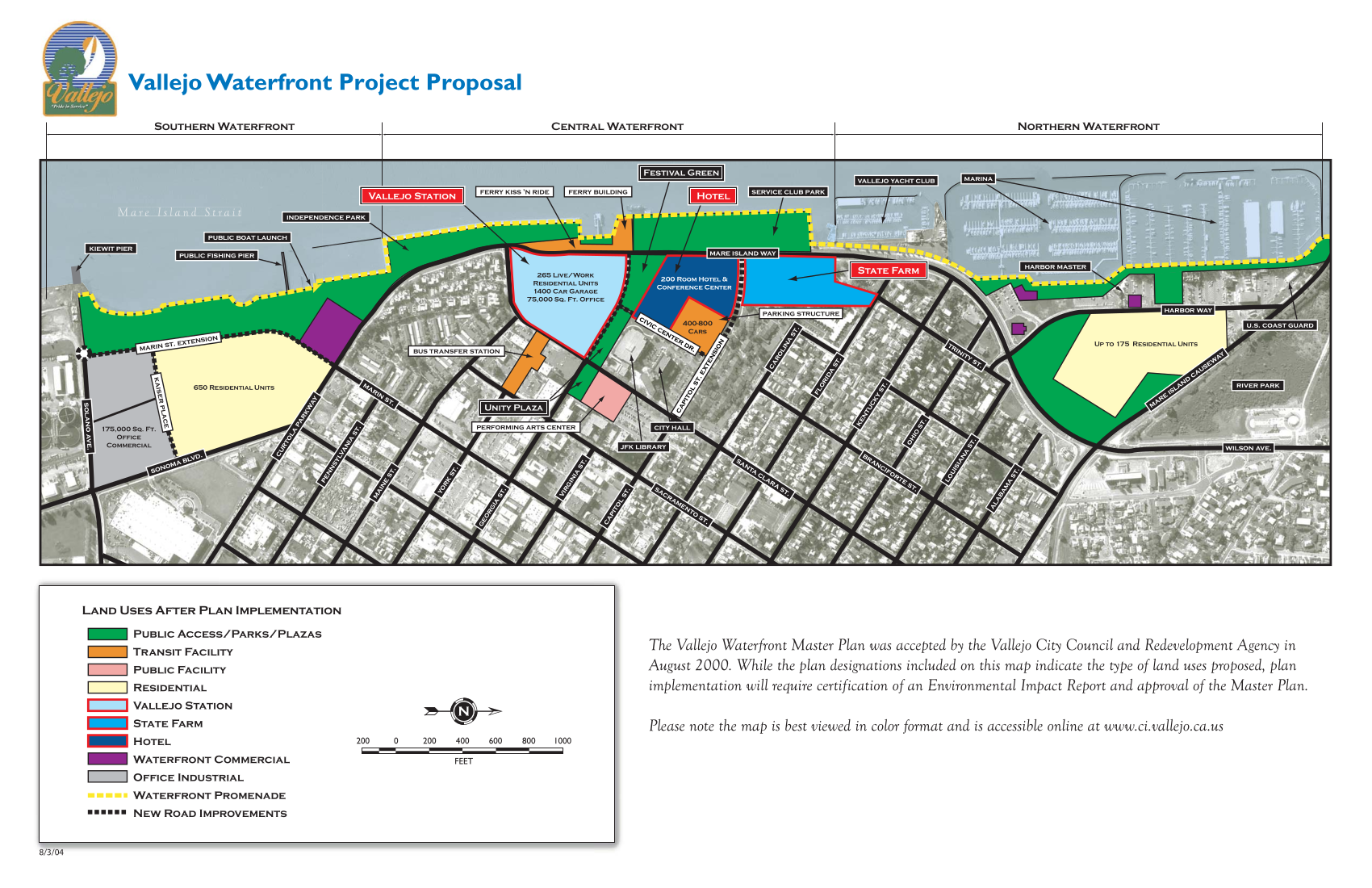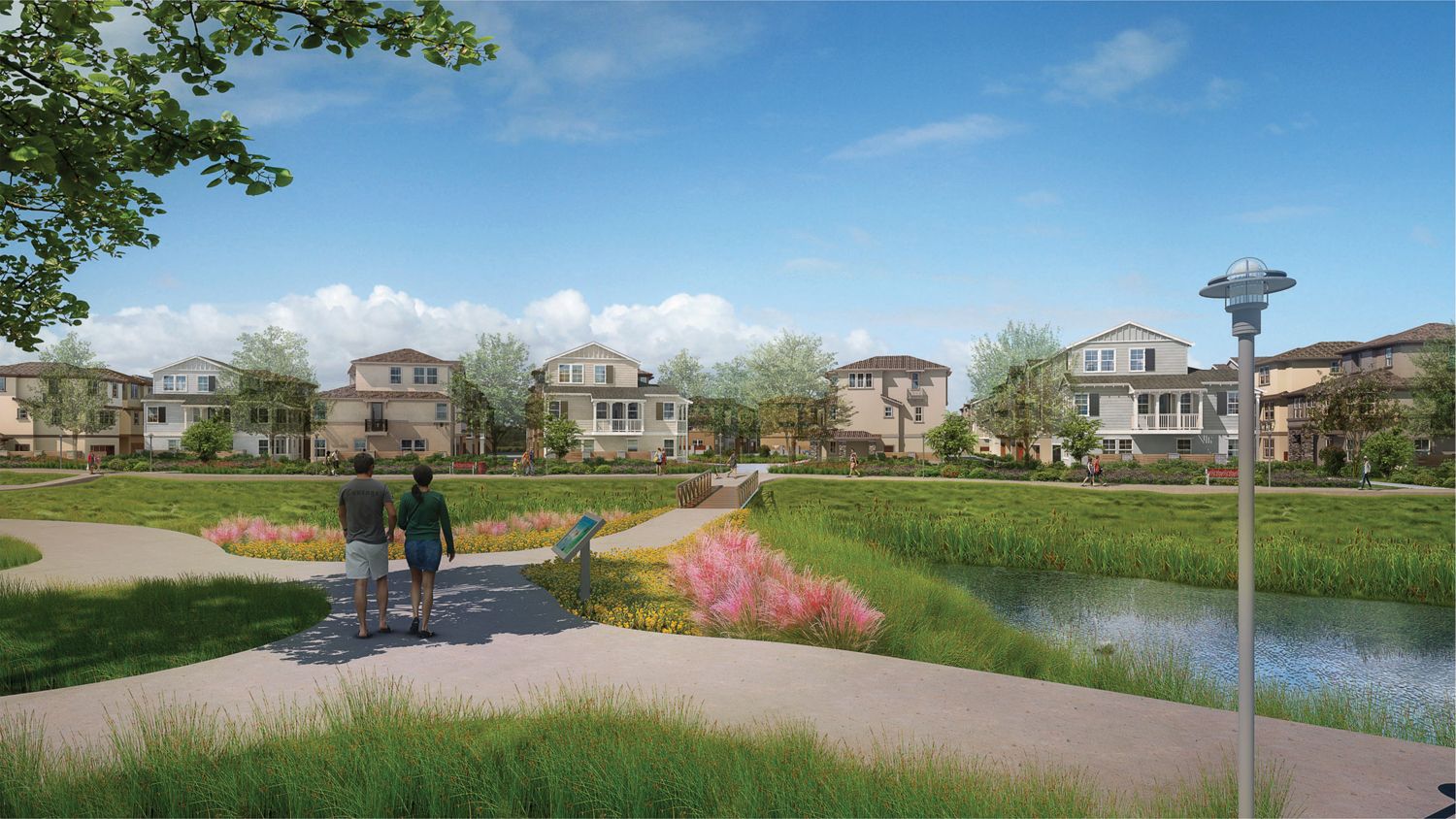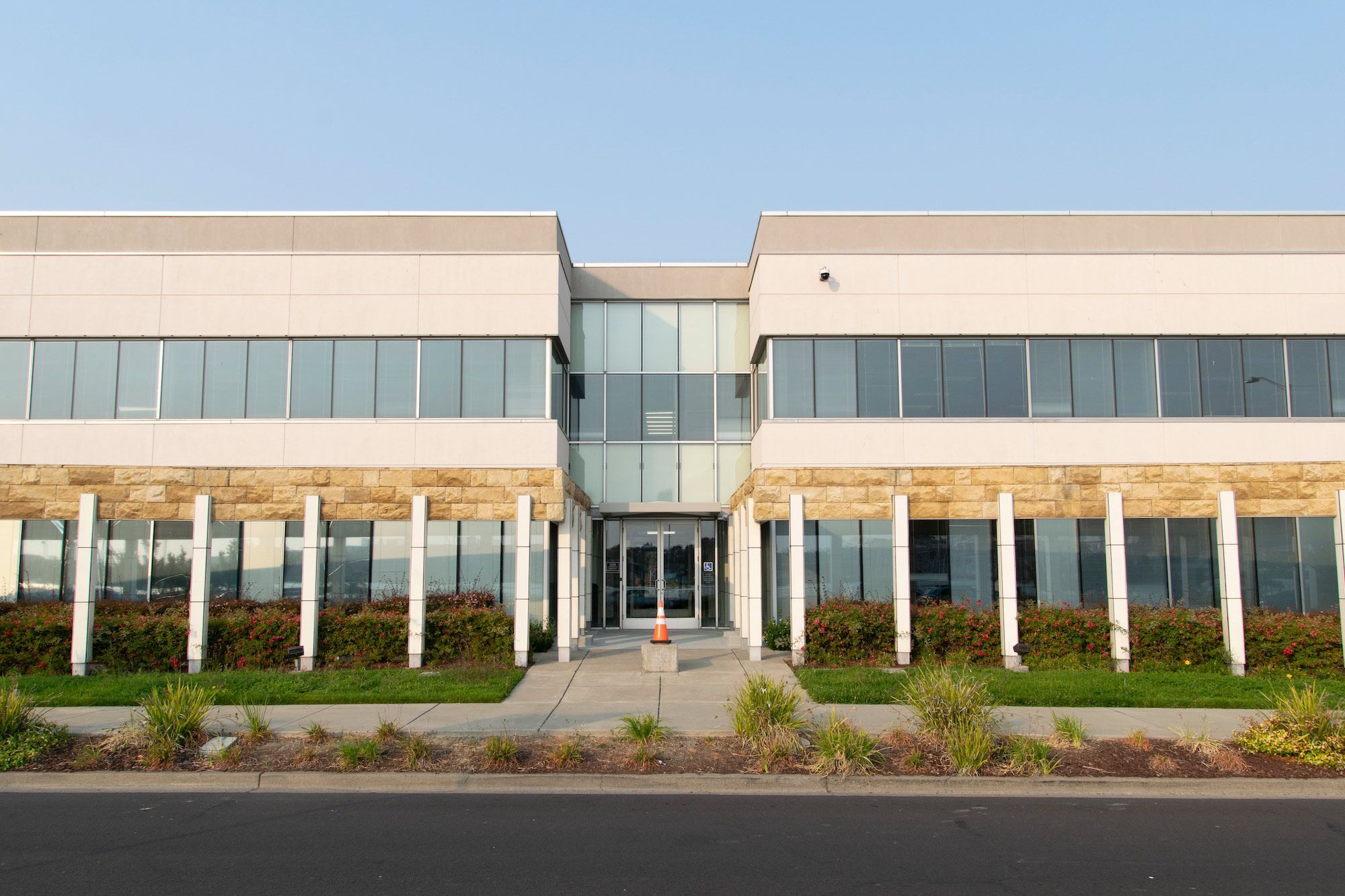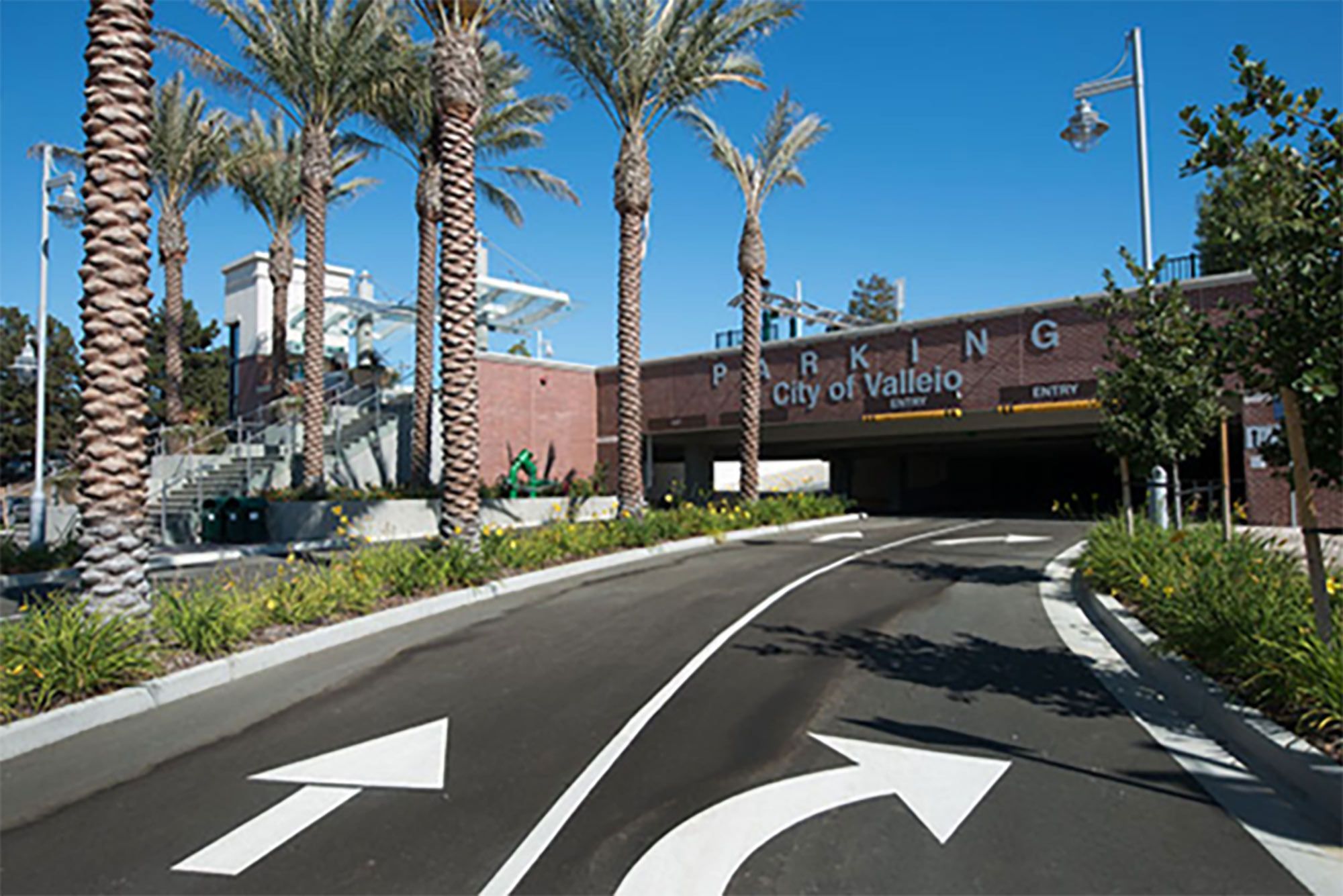VALLEJO — A developer tasked with rehabilitating a large portion of Vallejo's waterfront is out after more than 20 years, after achieving little in the way of development during that time.
The city of Vallejo granted Callahan DeSilva Vallejo LLC rights to an estimated 110 acres of waterfront development in 2000. DeSilva and Callahan parted ways in 2011, leaving Callahan Property Company as the sole project developer.
Callahan Property owner Joseph Callahan confirmed to the Vallejo Sun that his contract with the city ended Dec. 31. Assistant City Manager Gillian Hayes wrote in an Aug. 14 email to Councilmember Tina Arriola that the city would begin the process of finding a new developer late this year or early next year.
The Vallejo Waterfront Project covers the area from Solano Avenue to the Mare Island Causeway. The project is divided into three areas: The northern parcel is an empty lot near the Vallejo Municipal Marina, site of the proposed Mariner’s Cove development; the central parcel is adjacent to downtown; and the southern parcel is where PG&E is wrapping up a soil remediation project at Curtola Parkway and Solano Avenue.

A FAQ published in 2004 said that the project would bring new retail, commercial and residential buildings and potentially a performing arts center, a transit center, a parking garage, and a hotel and conference center. It said the project aimed to “attract people to live in Vallejo and provide an economic stimulus for the resurgence of the Waterfront and Downtown area.”
But since then, all that has been achieved is building an office building at 400 Mare Island Way that was later purchased by the city, a parking garage that is notorious for car break-ins, and upgrades to the Vallejo Transit Center bus terminal.
In an interview, Callahan cited the 1986 Tax Act, which imposed higher tax rates on investments on building than on other industries, California’s dissolution of Redevelopment Agencies, and increased building costs as hurdles to his ability to complete projects in Vallejo.
Callahan also said he thought he had planned adequately for increased costs associated with sea level rise, but that projections by state and federal agencies were much more stringent than expected.
“The effect of that was to more than double the cost of the [subdivision] improvements,” he said.
“DeSilva decided to walk away in 2011 and I stayed with it in anticipation of seeing a turnaround in both market and financing, and that could adjust to that cost,” Callahan said. “It's happened elsewhere, but it hasn't happened in Vallejo largely because of the city's general financial problems.”
The first Callahan project completed was the State Farm office building at 400 Mare Island way, which was purchased by the city for $13 million in 2019 to serve as a new police department headquarters. The city backed off that plan after community outcry, but the building houses some police services.
The project was controversial from the beginning and inspired the formation of the grassroots Vallejo Waterfront Coalition.
Former City Councilmember Stephanie Gomes resigned from the waterfront coalition when she decided to run for City Council. Gomes said the State Farm project was excluded from the waterfront plan and pushed through despite community objections. She said the cheaply-constructed tilt up building replaced a grove of redwood trees where kids from the neighboring low income housing used to play. “It was just heartbreaking,” Gomes said.
The waterfront development plan approved by the City Council in 2005 was challenged by the Vallejo Waterfront Coalition. Gomes said that Callahan’s plan was “horrific” with too little open space and tall buildings that would cut off the views and shut off the waterfront from the rest of the city.
Gomes said the coalition wanted a mixed use of live, work, art and outdoor recreation that would connect the waterfront with the downtown.

“When the Navy left, there was just this big vacuum in leadership, and what came in behind it was just crap, and they sold our city,” Gomes said. “As community members we just needed to try and right that ship a little bit, and make sure that the leaders knew that we valued these areas, and wanted to develop them in a sustainable, beautiful, mixed-use way.”
A review of an early version of the waterfront plan published by the Urban Land Institute in 1999 said that well-managed open spaces and recreational opportunities don’t typically generate revenue, but they serve as a catalyst for other income-producing uses.
Callahan said that the ideas people have about what they'd like to achieve in Vallejo are all wonderful, but they don’t recognize or address the costs of achieving those things.
A compromise on the waterfront plan was reached after the coalition sued the city, and an amended waterfront plan was created in 2007.
But the only components of the new plan to be completed are the Vallejo Station parking garage across from the Ferry Terminal and upgrades to the Vallejo Transit Center bus terminal.
The parking garage was frequently referred to in news articles as “the linchpin for further development” But the Urban Land Institute report recommended delaying parking garage construction to focus on making the waterfront’s open space more attractive.
The report said, “No compelling case has been made to build a garage downtown in the early stages of this project. The costs of such a garage are very high. Furthermore, its operating costs would have a significant impact on the city's general fund.”
The garage opening was delayed because of an elevator malfunction, and fines and additional expenses were incurred when contaminated groundwater was released into the strait. At a City Council meeting last month, city staff said that the garage’s operating costs were barely covered by its revenue, and councilmembers said that they receive frequent complaints about it and called it a “nightmare.”


Callahan attempted to amend the Planned Development Master Plan in 2012 to allow more high density apartment and office buildings on the waterfront, including a 180-unit apartment building on the open space now named the Barbara Kondylis Waterfront Green. Community opposition was strong and the amendment was defeated.
Callahan said he has failed to bring in partners to invest in the waterfront project because the economics of Vallejo just don’t pencil out. “Pleasanton’s sales tax revenue is $57 million in a town of 80,000 people,” he said. “Vallejo’s sales tax revenue was $27 million, or something like that, in a town of 120,000 people.”
“It's not the city. It's not the city staff. It's not the city government. It's a money issue,” Callahan said. “And all this negative crap that I see from time to time in the various papers just drives me crazy, because it doesn't address the root cause of the problem.”
Gomes said the city is still suffering financially after coming out of bankruptcy “because we didn’t restructure our debt.”
“In the middle of bankruptcy when we had the opportunity to restructure our employee contracts, the paid-for-by-the-unions council members voted to give the police raises and free health care,” Gomes said. She said that after she left in 2014, the council just seemed to cave in.
“Just every bad decision you can imagine,” Gomes said. “It's just like they brought us right back to the brink again, and it's just disgusting.”
Callahan’s interest in the southern waterfront parcel was halted in 2013 after necessary PG&E remediation came to light.
A KPIX newscast from Sept. 28, 2016, reported that the waterfront project was “finally coming back to life” after changes in state regulation and development and the economic downturn put the project on hold.
But the only waterfront development activity since then occurred in 2019, when the post office on Santa Clara Street was demolished to make room for future development, and the city approved spending $200,000 to fill the northern parcel marshland to facilitate the Mariner’s Cove development in 2019.
No further development has taken place at either location.
The City Council terminated Callahan’s rights to develop the central waterfront in 2020 after the company failed to meet project deadlines. The city retained Holliday Development in 2020 to construct a mixed-use development at the site of the former post office. The Yocha Dehe Wintun Nation was approved to develop the site of the former dentist office and an adjacent park in 2022.
Gomes said that Callahan didn’t have any performance measures or timelines to meet when she was on City Council. “They just let them slide for a long time. So finally, they're not, and that's good. It's a plus for the city,” Gomes said.
Gomes said that fights over future development can be avoided.
“If there's one lesson from the whole waterfront thing, where you have the public forming a group to sue the city to stop bad development, why not stop that from happening in the first place by listening to us?” Gomes said. “It never had to get to a lawsuit if they would have just worked with the community, but instead they tried to shove it down their throats, and the community fought back.”
Before you go...
It’s expensive to produce the kind of high-quality journalism we do at the Vallejo Sun. And we rely on reader support so we can keep publishing.
If you enjoy our regular beat reporting, in-depth investigations, and deep-dive podcast episodes, chip in so we can keep doing this work and bringing you the journalism you rely on.
Click here to become a sustaining member of our newsroom.
THE VALLEJO SUN NEWSLETTER
Investigative reporting, regular updates, events and more
- government
- business
- Callahan Property Company
- Joe Callahan
- Stephanie Gomes
- Vallejo Waterfront
- 400 Mare Island Way
- Gillian Hayes
- Vallejo City Council
- Vallejo City Hall

Gretchen Zimmermann
Gretchen Zimmermann founded the Vallejo Arts & Entertainment website, joined the Vallejo Sun to cover event listings and arts and culture, and has since expanded into investigative reporting.
follow me :




